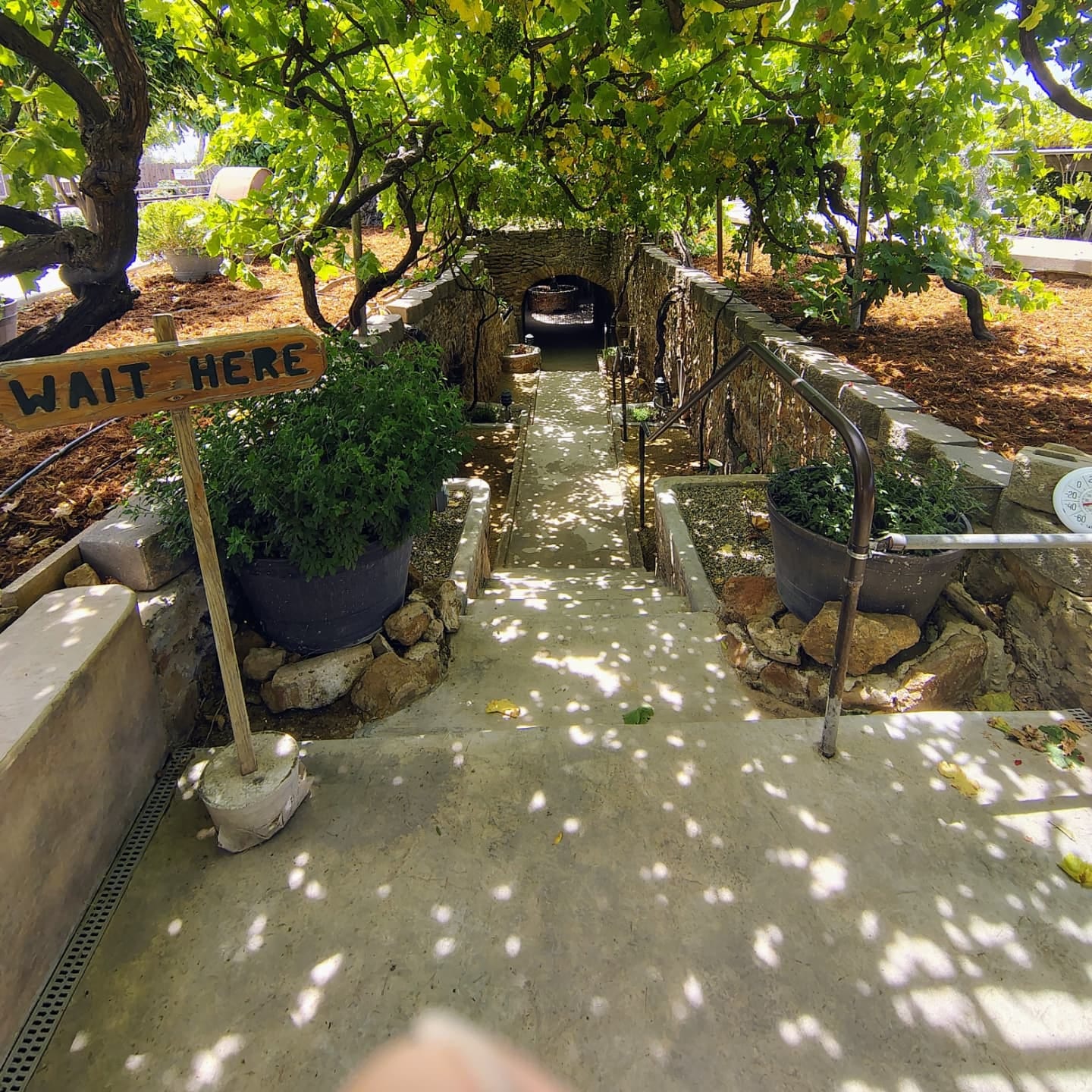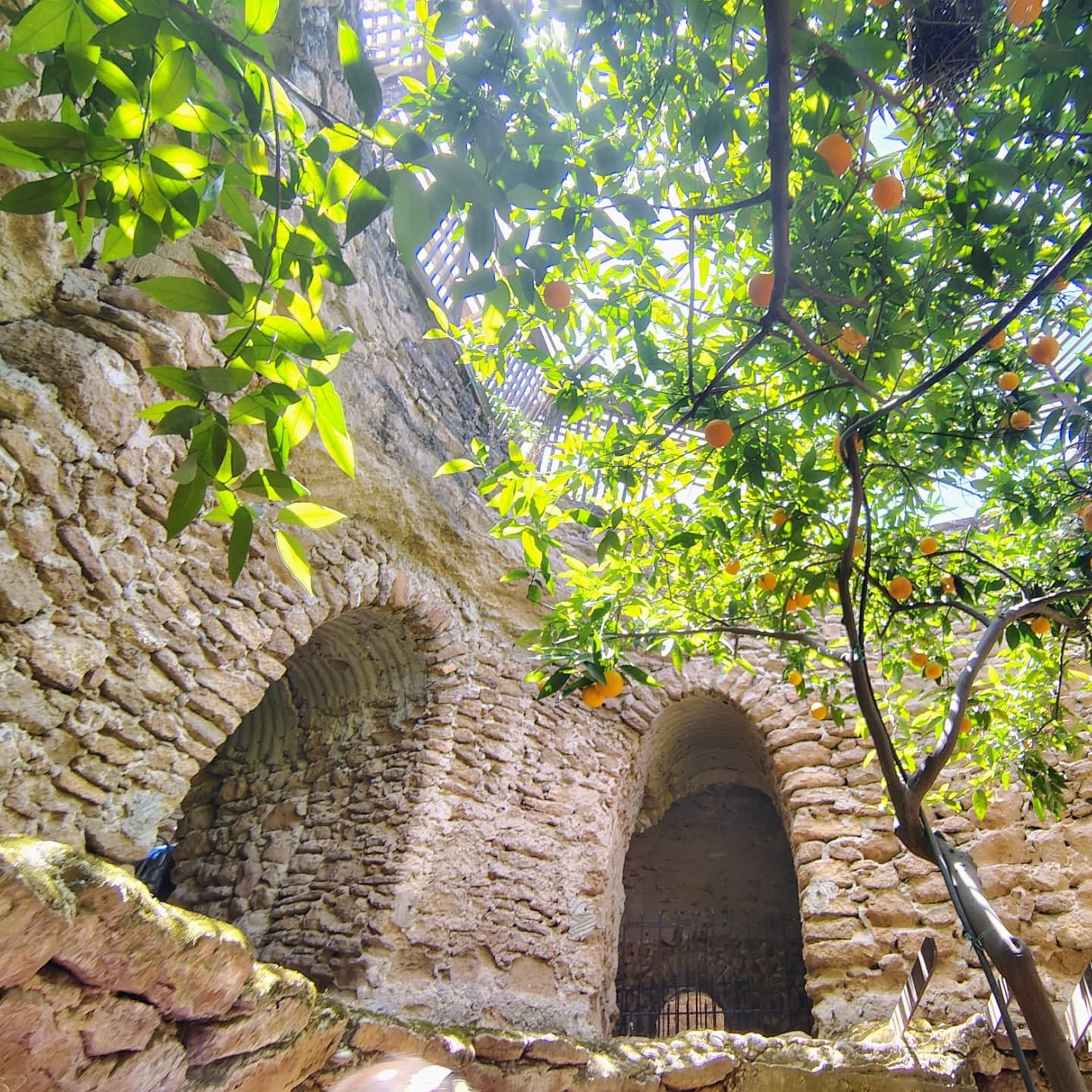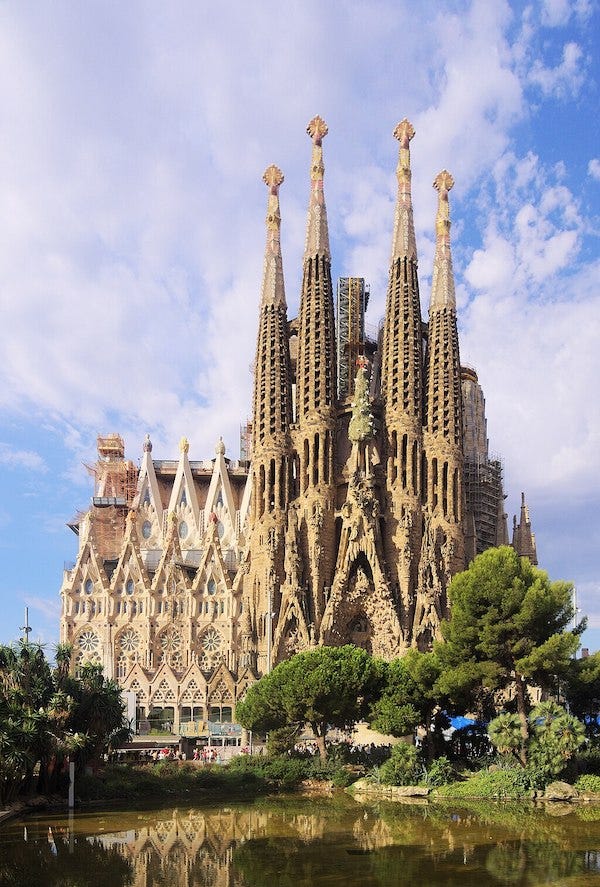It’s amazing what incels could accomplish in the era before the internet and building codes. Back before video games, Twitter and obtrusive county bureaucracies, men without women would sometimes engage in heroic acts of folk architecture, art brut, using nothing more than a pick and shovel, or maybe a Fresno scraper and mule.
Such were my thoughts on Memorial Day as I was guided around the Forestiere Underground Gardens in Fresno, where the main topic of the tour was how, in the first half of the 20th century, a smallish Italian bachelor named Baldassare Forestiere carved an underground paradise out of a plot of $1-an-acre, Central Valley hardpan. It’s an impressive achievement, scraping an unforgiving land with hand tools into more than a mile of tunnels and rooms, all so he could plant grapes and kumquats.
Happily, it was wonderfully temperate last Monday, 80 degrees and clear skies. The best time to visit, however, is in the middle of July, when it’s 110 and the sun beats down, making it easier to understand why a man might burrow into the earth and take his fruit trees with him. The Central Valley in summer is not a place for the weak or easily discouraged.
The perpetual bachelorhood of Baldassare Forestiere was at the forefront of my mind because, of course, he’d have to be bachelor to do what he did, the ultimate incel. No man with a wife would be allowed to waste so much time and energy on such a ridiculous obsession. More than that, I would imagine that Forestiere would not just be wifeless, but that he would have to have been grievously disappointed in love; spurned, jilted, dumped or dismissed. I’m not alone in guessing that. The novelist T. C. Boyle imagined that very thing in a 1998 short story version of Baldassare’s life, having him rejected by the stout, cockeyed niece of a Greek short-order cook, thrown over for Hiram Broadbent, heir of the Broadbent poultry fortune.
Boyle’s account of Forestiere’s origin story is explicitly fictional but seems functionally true, the sort of detail that could not be false. Great heartbreak often occasions great works of art, or at least heroic feats of effort, however misdirected. Even if not true, the key thing is that Forestiere was wifeless, a man without a woman, likely through no choice of his own. Thus, to use the graceless modern term, he was an “incel”, an involuntarily celibate man, consigned to loserdom in world in which all the Chads and Stacys have paired off. Today, he’d likely find rough solace in video games and pornography, the misogynistic musings of pickup artists and online malcontents. But, in the first half of the last century, none of those outlets were available. All he had was a pickax, a shovel and 80 acres of nearly worthless land.
And here’s the thing, Baldassare Forestiere was not alone in his madness. There were other heroic incels building their own fantastical landscapes at exactly the same time. Consider, Edward Leedskalnin, a tiny Latvian mason who built a castle out of coral in southern Florida, a magnificent edifice erected on the ruins of a crushed romance.
Leedskalnin’s muse/anti-muse was Agnes Skuvst, a 16-year-old Latvian girl who broke their engagement on the night before their wedding, sending Ed into a tailspin that would last the rest of his life. His “Sweet Sixteen”—frequently mentioned in his eccentric writings on magnetism—was the motive power that propelled Leedskalnin to America, where he carved out and stacked 10-ton blocks of porous stone, building a monument to his own tender emotions.
Or consider Sam “Simon” Rodia, who, in South Central Los Angeles, turned being dumped by his wife into a soaring assemblage of detritus, towers of repurposed trash reaching for the heavens. Asked to explain his motives for building his 99-foot-tall Watts Towers, Rodia simply answered, “I wanted to do something big, and I did.”
That sentiment, “I wanted to do something big,” is the key to understanding the impulse that produced such monumental and monomaniacal works. Besides being womanless, Forestiere, Leedskalnin and Rodia were remarkably similar, all three immigrants, craftsmen and laborers, born between 1879 and 1887, and conspicuously tiny, a fact often commented upon in newspapers.
The “little man” Baldassare Forestiere was 5’4”, Edward Leedskalnin “just over 5 feet tall”, and Sam Rodia “a tiny man, at 4’11”. Imagine being an immigrant, a working man, a man of smallish stature competing for girls with the Hiram Broadbents of America, your opposite, “a big, fat man…Wears a straw hat winter and summer…Always got money in his pocket.” Your chances are not good.
So, how does a man leave his mark on the world? That’s the question. How does a man leave his mark on the world?
For most of us—big, fat men with money in our pockets—we get married and have children. Most of us are content that our monument to the future survives in our lineage. That’s the best we can do, have our genes continue. But if you’re a small man with work-hardened hands and a broken heart, unable to find a woman who will have you, you might pick up a shovel and get to work.
Or, at least, in that specific moment, in the first half of the 20th century, on the edges of the continent where land was cheap and foreigners were welcome, you might buy a piece of scrub land and build something big; you might harness the power of your inceldom, into a gesture of heroic creation; leaving your mark in the most direct way possible, by transforming the very earth into something fantastical.
Or, if you are middle class and formally trained, you might transmute your pain into the highest art, as the Catalan architect Antoni Guadi did. Rejected by Pepeta Moreu, her hair the “color of old gold, almost mahogany,” the daughter of a patron, Gaudi’s disappointment “left a lasting mark.” So, he remained a lifelong bachelor, saying, “I have never felt a calling for marriage”
Thus, Gaudi is the patron saint of incels, a rejected man who embraced his celibacy and tamed Eros, channeling his passions into a lifelong devotion to God and art. In doing so, he produced one of the most startling and sacred architectural visions of the modern era, the Sagrada Familia, a work that carries the hopes of man heavenward, and Gaudi’s mark upon the world into eternity. If, in the elemental scheme, Forestiere is earth, Leedskalnin water and Rodia air, then Gaudi is super-celestial, the architect of the realm beyond the stars.
Like the three amateurs, Gaudí rejected the straight lines and reproducible forms of the machine age, the standardizations of the 20th century. Like them, his work took organic forms, curving, eccentric, inwardly animated and natural. But where theirs was raw, improvised and private, his was ordered, transcendent and very visible. If they carved their pain into private mythologies, Gaudí turned his into a public liturgy, aided by patrons, clients and a public that cheered him on.
Suffering is not the only way to achieve artistic greatness, nor was romantic rejection the only motivation for a figure as complex and pious as Antoni Gaudi, but to deny the role they played in producing works of art is to miss something our comfortable and connected 21st century no longer values. The therapeutic methods of the modern medical system have done little for art, and not much more in easing our existential pain. Only faith in God, connection with our fellow humans, hard work and art can do that.
Finally, notice that I’ve used the term “incel” throughout this essay deliberately, as a provocation. I want you to see that the frustrated desires—physical and spiritual—that manifested as untutored greatness in Rodia, Forrestiere and Leedskalnin are the same impulses that manifest as baseness in the modern Internet incel. The difference lies not in the depth of anguish or loneliness, but in the ability to howl at the world. Before the internet, a lonely man might speak through stone, steel and shovel. Today, he shouts anonymously into the void and his voice is echoed and amplified back to him, his worst and bleakest thoughts incorrectly reinforced as “reality”.
Not only has the Internet allowed us to shout, it has also stripped us of our ability to endure in silence, to sit quietly with our grief and process it, to take our loneliness and boredom and transform them into something more noble. Likewise, so few of us engage in hard physical work anymore, thus few of us know that a body exhausted by labor can make us forget, that work is, in Poe’s words, “respite and nepenthe from thy memories.” And physical labor is exactly one of the things you think about when you’re visiting the Forestiere Underground Gardens, of how much physical effort it took for Baldassare Forestiere to dig out that much dirt. Thanks to the internet, the modern incel is detached from himself, his body and his innermost thoughts. If he clings to his phone, has no way of coping with his condition except formless rage and bad behavior, instead he needs to disconnect and pick up a shovel.
Thanks for reading! I’ll be back next week with something new. In the meantime, follow me on Twitter. Cheers!









There are so many “graceless modern terms,” aren’t there? Thank you for this antidote.
What a marvelous haunting story! I do hope he had some friends, though. It